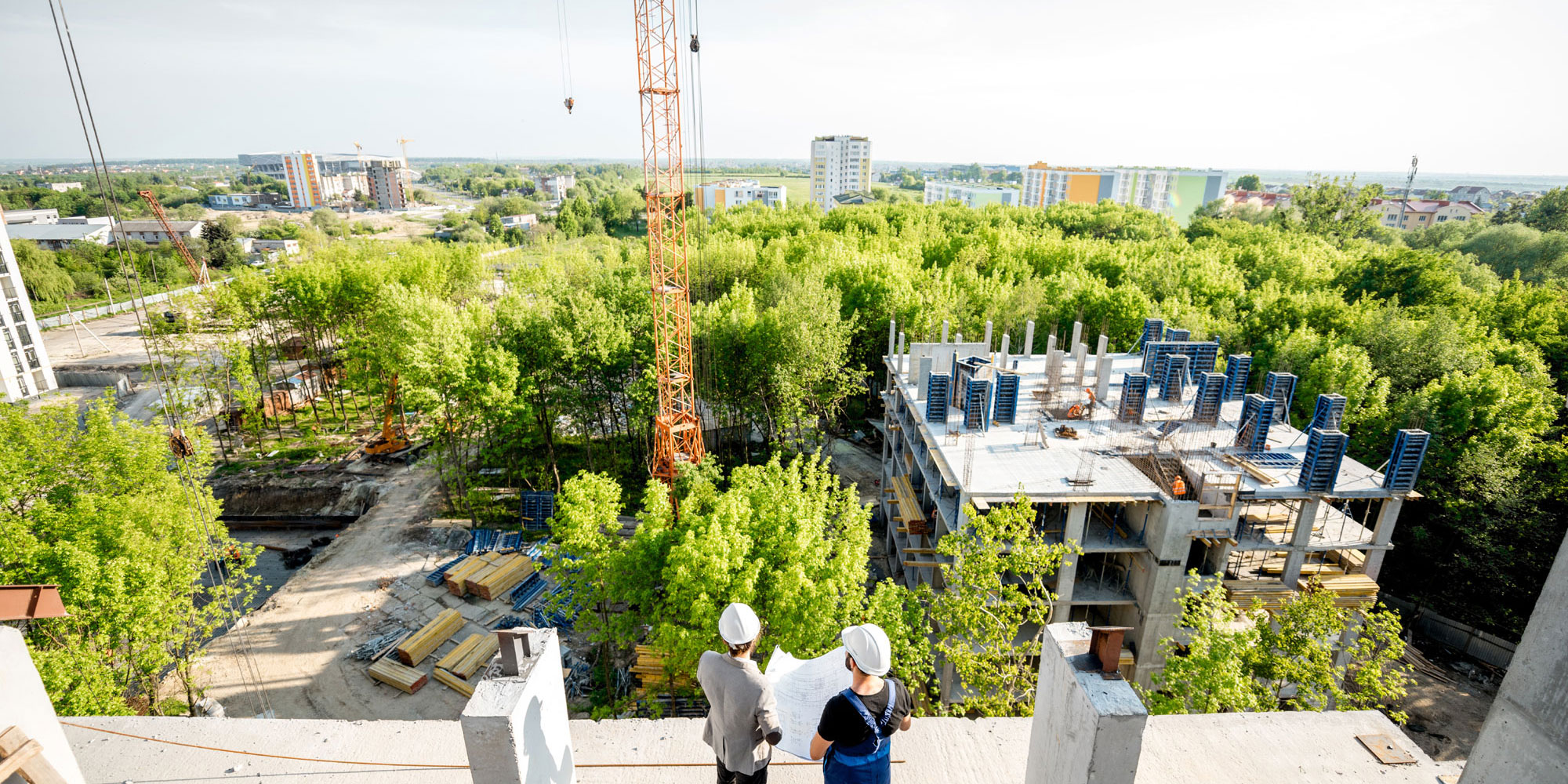How ESG criteria change transaction processes

In commercial and residential real estate transactions, the technical assessment of a property in the context of a technical due diligence (TDD) or an environmental due diligence (EDD) as well as the legal due diligence (LDD) advice have so far provided the most important data basis for an investment decision. But now the call is growing louder for an expansion of assessments based on ESG criteria (Environmental, Social and Governance) as a basis for decision-making, in which environmental and social issues as well as corporate governance are to be given greater consideration.
Sustainability in focus
There are two solid reasons for this: While risk and return were previously the most important key figures for investors when buying a property, the aspect of sustainability is now coming much more clearly to the fore. The reason for this is the planned measures of the European Union to build a sustainable financial system (Sustainable Finance Action Plan). The planned legal regulations will force the real estate industry as a whole to rethink and act from next year, albeit with a different focus in different areas. The requirements of the overall ESG package will initially primarily affect institutional investors. However, ESG aspects will also play a much greater role for project developers and service providers in the context of transaction processes. This is because there will be pressure to act with regard to sustainability, especially for existing properties, from next year onwards. The EU Commission wants Europe to become the first climate-neutral continent by 2050. Accordingly, in a first step, CO₂ emissions are to be reduced by 55 percent by 2030 compared to 1990 levels.
According to data from the European Commission, buildings account for around 40 percent of energy consumption and 36 percent of CO2 emissions in the EU. This is one of the reasons why investors are increasingly looking to invest in properties that meet contemporary or future-oriented standards in terms of CO₂ emissions, energy efficiency and resource consumption of the building. Pure CO₂ assessment has been established for some time in the form of material databases and operating parameters. However, it is supplemented by the criteria summarised under ESG with aspects that take into account the social responsibility of the company and the corporate policy. However, it is currently questionable how these requirements can be meaningfully implemented within the framework of the often very short-term transaction processes.
From TDD and EDD to ESGDD
A TDD, as it is sensibly carried out today, already documents numerous data and facts on emissions, energy consumption and proposed solutions for sustainable optimisation. In combination with an EDD, which also includes aspects on health and safety or hazardous substances in accordance with legal requirements, a comprehensive picture of a property can already be presented. In order to achieve a holistic view according to ESG criteria, it is therefore necessary on the one hand to fundamentally bundle the aspects of TDD and EDD to be assessed in a new, more complex form of due diligence that meets the requirements of sustainability. On the other hand, the classic TDD must be expanded to include ESG aspects in order to be able to meaningfully assess sustainability risks in transactions in the future. Here, the expertise of specialised architects, engineers and consultants will be increasingly in demand in the future. This is because investors and companies will need more information than they do today in order to better identify sustainable investments. As a result, the costs (fees) for the corresponding technical assessments will increase, but at the same time the reports will also provide a valuable contribution and added value by showing the ways to make the corresponding properties, especially existing ones, fit for sustainability. In the case of newer buildings, BREEAM or LEED certification or comparable measures can offer investors certainty with regard to a property's potential to increase in value. Certification of existing buildings is also feasible today with the given instruments, but represents a considerably greater effort. Adding ESG criteria to the purchase assessment helps the investor in the purchase decision and can form the basis for a portfolio certification.
Extra effort that can be worthwhile
For these reasons, not only institutional investors, for whom the topic of ESG has played an important role for some time, but all companies involved in transaction processes will have to put the topic of ESG on their agenda by spring 2021 at the latest. It is also important to sensitise the owners of existing properties to this topic. In addition, ESG factors must be integrated more strongly into the valuation processes and reporting forms. This will initially lead to a significant additional effort in many companies involved in these processes, but it will pay off in the medium term. This is because positive ESG assessments will be a central criterion for investment decisions in the future, whereas negative results are likely to lead to a devaluation of property values. Conversely, this scenario could also lead to existing properties being increasingly maintained or revitalised on the basis of the assessments of technical and ESG parameters in order to maintain their value in the longer term in the face of increasing sustainability requirements and thus minimise risks for the portfolio. Therefore, it is important to now intensively deal with the topic of ESG and to integrate it into one's own processes. And not only to be prepared for the coming legal regulations. The implementation of ESG criteria in transaction processes is a sensible, necessary and consistent way for the real estate industry to make its contribution to a sustainable future in view of the enormous challenges posed by climate change.